#Franz Sanchez
Text
Bond Villain fancast
Fun fancast where I fancast iconic Bond villains for the modern day or if they were apart of the Craig era/next Bond's era
BD Wong as Dr Julius No
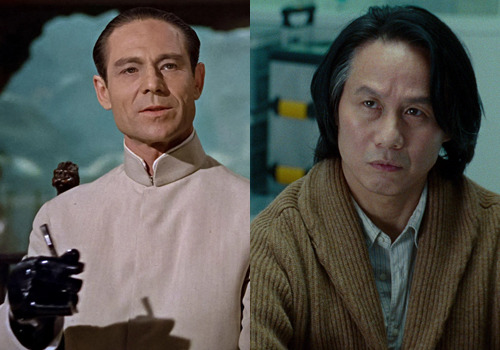
Michelle Gomez as Rosa Klebb

Alexander Skarsgard as Red Grant

Brendan Gleeson as Auric Goldfinger

Benedict Wong as Oddjob

Kyle MacLachlan as Emilio Largo

Christoph Waltz, Pedro Pascal and Mark Gatiss as Ernst Stavro Blofeld



Jason Schwartzman as Mr. Wint

Jesse Plemons as Mr. Kidd

Daniel Kaluuya as Dr Kananga/Mr Big

Rory McCann as Jaws

Chiwetel Ejiofor as Francisco Scaramanga

Stellan Skarsgard as Karl Stromberg

Peter Dinklage as Hugo Drax

Mark Strong as Aris Kristatos

Oded Fehr as Kamal Khan
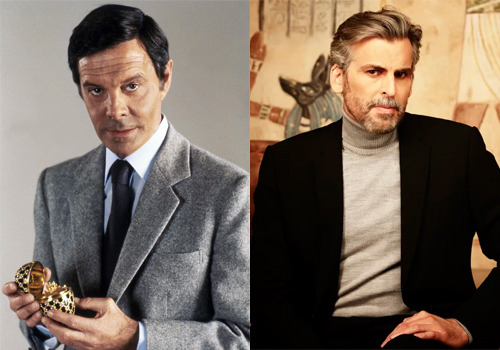
John Malkovich as General Orlov

Jade Cargill as May Day

Benicio del Toro as Franz Sanchez

Timothy Granaderos as Dario

Jean Dujardin as Georgi Koskov
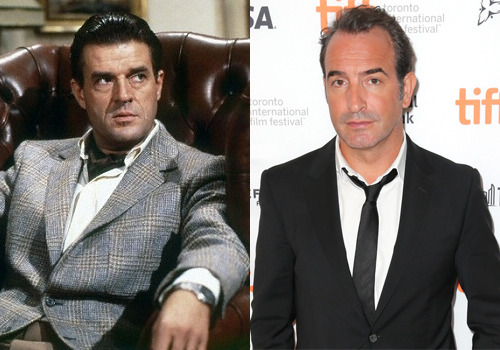
Georges St-Pierre as Necros

Dean Norris as Brad Whittaker

Ewan McGregor as Alec Trevelyan

Jodie Comer as Xenia Onatopp

Jeremy Irons as Elliot Carver

Daniel Radcliffe as Renard

Daisy Ridley as Elektra King

James Norton as Gustav Graves

Andrew Koji as Zao

Florence Pugh as Miranda Frost

#Bond Villains#Fancasts#James Bond#Dr No#Ernst Stavro Blofeld#Rosa Klebb#Red Grant#Auric Goldfinger#Oddjob#Emilio Largo#Mr Big#Jaws#Francisco Scaramanga#Karl Stromberg#Hugo Drax#Aris Kristatos#Kamal Khan#General Orlov#May Day#Franz Sanchez#Dario#Georgi Koskov#Necros#Brad Whittaker#Alec Trevelyan#Xenia Onatopp#Elliot Carver#Elektra King#Gustav Graves#Miranda Frost
3 notes
·
View notes
Text
Oliver Mansfield's Intro Post




Villainous Nickname: Oliver Sanchez
Modus Operandi: Buy them off. Everybody's got a price
About my lair: It's pretty cosy actually! And picture that: it's got komodo dragons
My secret weapon: A single bic pen
What are you most looking forward to about 007 Fest 2022: Seeing what those pesky MI6 agents and minions have got in store
Villainous catchphrase: 'No, Mr Bond, I expect you to dine!' (Always feed your guests. It's common courtesy)
16 notes
·
View notes
Text

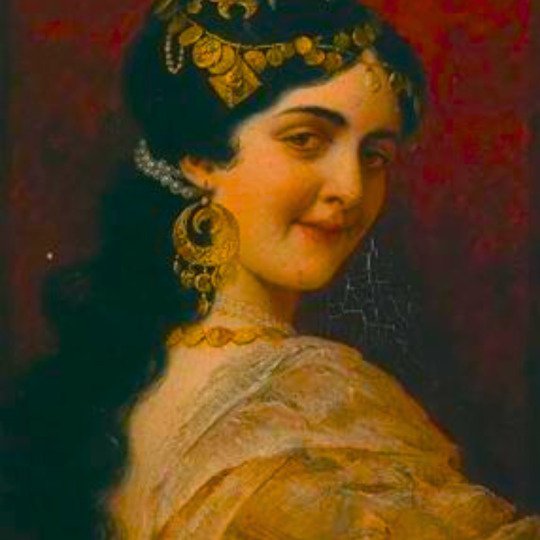



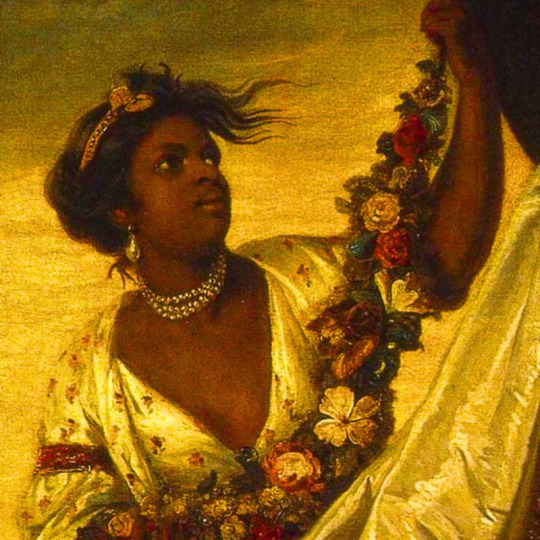

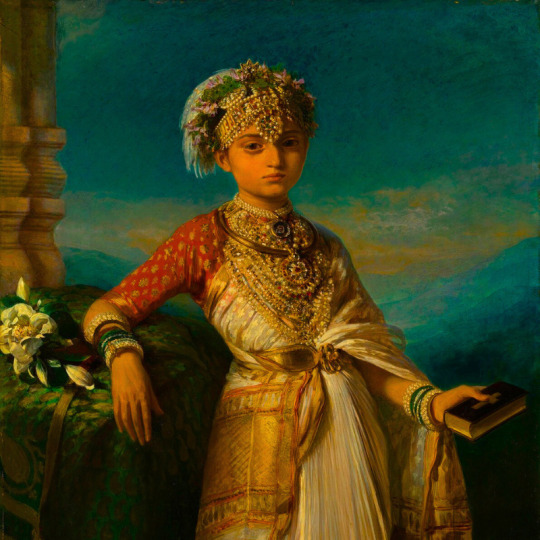





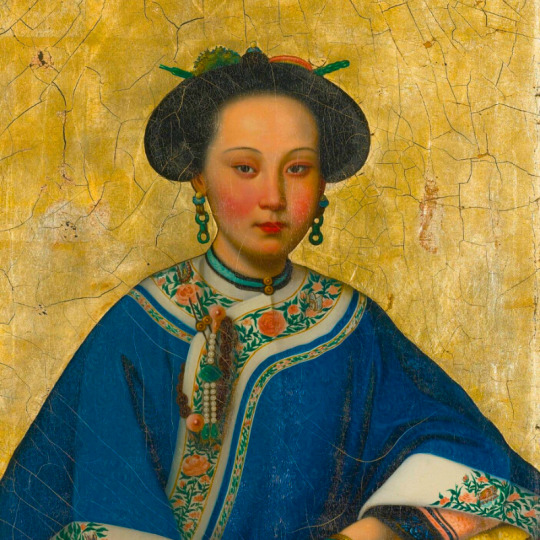


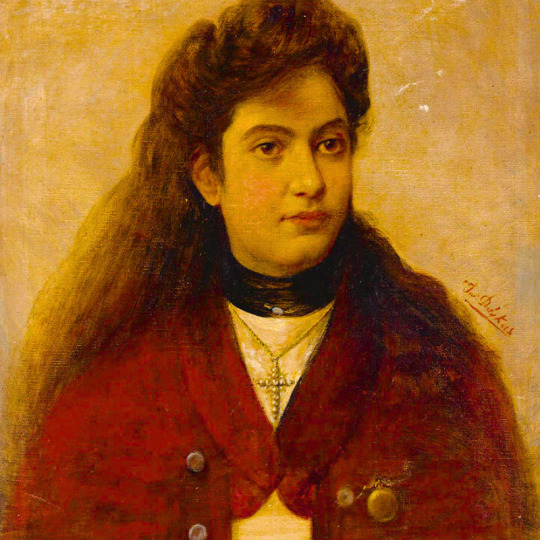




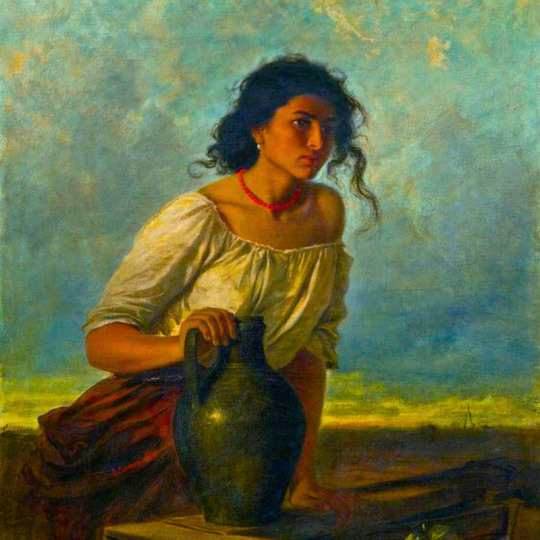
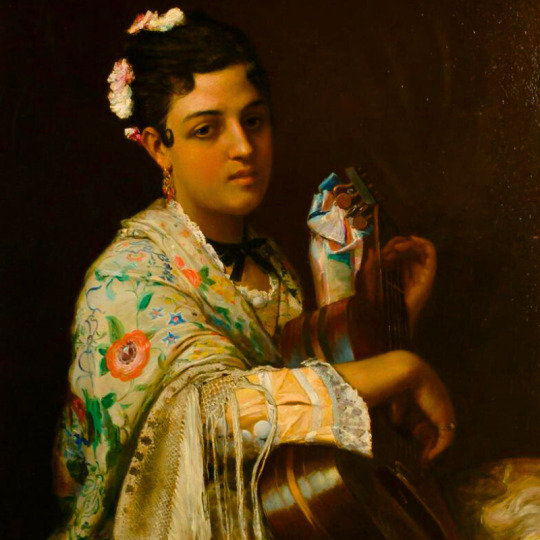
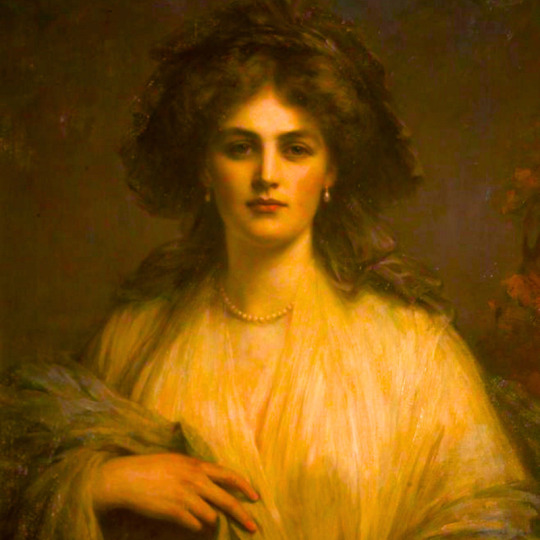

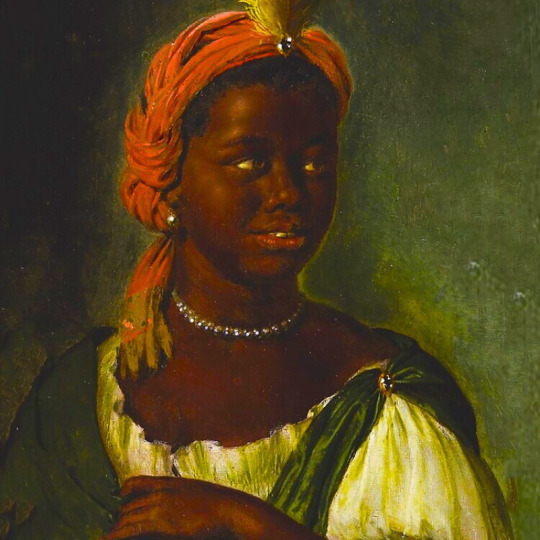
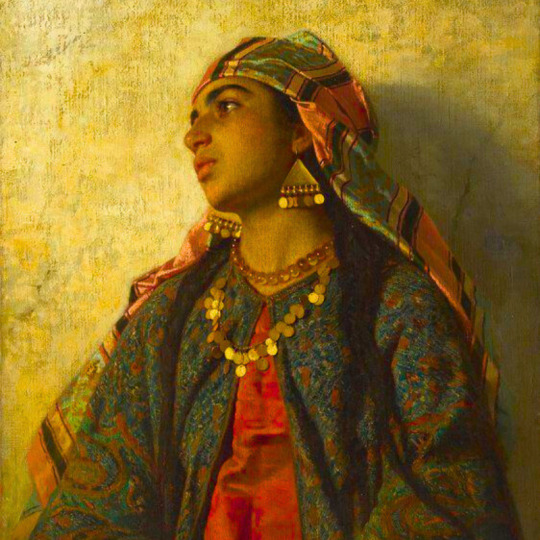


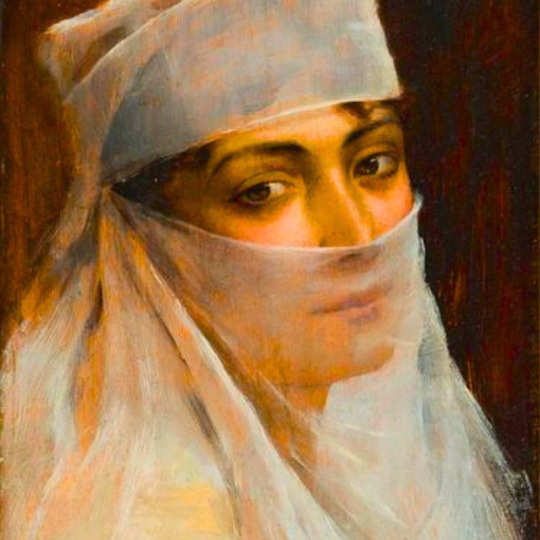
women + portraits
#portrait of an egyptian woman by unknown#portrait of a lady in oriental headdress by mortiz stifter#mona lisa by leonardo da vinci#portrait of a lady by rogier van der weyden#portrait of ginerva benci by leonardo da vinci#portrait of lady elizabeth keppel adoring a herm of hymen england by sir joshua reynolds#portrait of edith jocelyn by heinrich m. muller#portrait of princess gouramma by franz xaver witerhalter#portrait of a lady wearing a floral wreath by marie genevieve bouliard#portrait of unknown swiss woman by unknown#infantin of isabella clare eugenia at 13 by alonso sanchez coello#portrait of a lady by abbey alston#portrait of a noblewoman by cesare agostino detti#a portrait of a beauty qing dynasty by unknown#portrait of a noblewoman by jan adam kruseman#on a balcony self portrait by marie spartali stillman#portrait of a greek woman by ioannis doukas#portrait of maria manicini by jacob ferdinand voet#unknown by sir frank dicksee#ms charles sabine thellusson by margaret sarah carpenter#portrait of a girl holding a lily by john simmons#girl with vase by leopold carl muller#portrait of a spanish lady by henri-guillaume schlesinger#lady beatrice butler by ellis william roberts#portrait of a woman by felipe santiago gutierrez#an african womab by willem van mieris#1889 moorish girl by francesc masriera#an oriental beauty by franz xavier kosler#an egyptian girl by franz xavier kosler#young girl with veil by albert aublet
309 notes
·
View notes
Text









SHE HATED HER LIFE, NOT BECAUSE IT WAS BAD, BUT BECAUSE WHEN YOU HATE YOUR BRAIN AND YOUR BODY, IT'S HARD TO ENJOY THE REST.
Franny Choi I Guess By Now I Thought I'd Be Done With Shame / Erika L. Sánchez Amá / Franz Kafka Letters to Friends, Family, and Editors / Hanif Abdurraqib A Little Devil in America: Notes in Praise of Black Performance / Richard Siken Birds Hover over the Trampled Field / Hélène Cixous The Selected Poems of Hélène Cixous / Alberto Zamboni Ovunque / Oscar Nin / Richard Siken Crush
i. Franny Choi I Guess By Now I Thought I'd Be Done With Shame [ Somewhere, / there is a version of me that isn't neck-deep in her invented filth. ]
ii. Erika L. Sánchez Amá [ Amá, I leave because / I feel like an unfinished / poem, because I'm always trying to bridge the difference. ]
iii. Franz Kafka Letters to Friends, Family, and Editors [ I don't feel particularly proud of myself. / But when I walk alone in the woods or lie in the meadows, all is well. ]
iv. Hanif Abdurraqib A Little Devil in America: Notes in Praise of Black Performance [ I've run out of language to explain the avalanche of anguish I feel when faced with this world, and so if I can't make sense of this planet, I'm better off imagining another. ]
v. Richard Siken Birds Hover the Trampled Field [ The enormity of my desire disgusts me. ]
vi. Hélène Cixous The Selected Poems of Hélène Cixous [ You horrify me. But at the same time, I horrify myself. We are horrible. ]
vii. Alberto Zamboni Ovunque [ The silhouettes of two human figures stand in a room. The background is blurred around them. ]
viii. Oscar Nin [ Distressed painting portrait of a man. ]
ix. Richard Siken Crush [ a gentleness that comes, not from the absence of violence, but despite the abundance of it. ]
#i've never done image ids before i'm a little worried that they suck#franny choi#i guess by now i thought i'd be done with shame#erika l sanchez#ama#franz kafka#letters to friends family and editors#hanif abdurraqib#a little devil in america#richard siken#birds hover over the trampled field#helene cixous#alberto zamboni#ovunque#oscar nin#poetry#poem#painting#oil painting#art#artwork#poetry web weave#on self disgust#web weaving#web weave#poem web weave#writing#spilled ink#spilled thoughts#spilled poetry
159 notes
·
View notes
Text
HANNAH’S “WHO’S HOTTEST?” MALE BOND VILLAINS BRACKET
ROUND 2/5- POLL 8/16



Welcome to ROUND TWOOOO
Once again: One day only for each poll. All other polls can be found in my “hannah is talking” or “hannah’s bond bracket” tags. And don’t worry if you don’t know these dudes, just vote with your heart.
Have Fun!
#I’m a Franz Sanchez enjoyer honestly but VOTE ALEC. ALEC SWEEEEEEP#hannah is talking#hannah’s bond bracket#james bond#007#polls#smash or pass#who’s hotter?
6 notes
·
View notes
Text
SDCC 2023: Fantagraphics Announces the Publication of Braba, a Brazilian comics anthology Edited by Rafael Grampá and Janaína de Luna
SDCC 2023: Fantagraphics Announces the Publication of Braba, a Brazilian comics anthology Edited by Rafael Grampá and Janaína de Luna #comics #SDCC #SDCC2023 #SDCC23 #ComicCon #ComicCon2023
Fantagraphics has announced Braba, a high concept anthology of innovative Brazilian comics. Expertly curated by renowned Brazilian cartoonist Rafael Grampá and famed Brazilian comics editor Janaina de Luna, this extraordinary collection of 13 short stories created by 16 pioneering Brazilian cartoonists captures the vibrant and daring nature of the Brazilian comics scene. Produced in collaboration…

View On WordPress
#amanda miranda#braba#bruno seelig#cris eiko#diego sanchez#fantagraphics#gabriel goes#graphic novel#graphic novels#janaina de luna#jefferson costa#jessic agroke#joao pinheiro#paulo crumbim#pedro cobiaco#pedro franz#rafael coutinho#rafael grampa#san diego comic-con#sdcc#shiko#sirlene barbosa#wagner willian
1 note
·
View note
Text













q!etoiles - how can this be anything but an act of love? (hold my heart as it spills out of my chest)
alice notley / franz kafta / @illustromic / silas denver melvin / sonia sanchez / @dearestrey / brianna wiest / @stormyseaes / @xxcapybaragamingepic1337xx / frank bidart / alain de botton / @lish-lishii / adonis
131 notes
·
View notes
Text
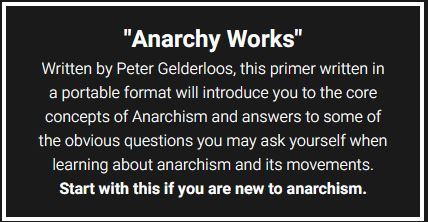
Chapter 6. Revolution
How will a common, anti-authoritarian, ecological ethos come about?
In the long run, an anarchist society will work best if it develops a culture that values cooperation, autonomy, and environmentally sustainable behaviors. The way a society is structured can encourage or hinder such an ethos, just as our current society rewards competitive, oppressive, and polluting behaviors and discourages anti-authoritarian ones. In a non-coercive society, social structures cannot force people to live in accordance with anarchist values: people have to want to do so, and personally identify with such values themselves. Fortunately, the act of rebelling against an authoritarian, capitalist culture can itself popularize anti-authoritarian values.
Anarchist anthropologist David Graeber writes of the Tsimihety in Madagascar, who rebelled and removed themselves from the Maroansetra dynasty. Even over a century after this rebellion, the Tsimihety “are marked by resolutely egalitarian social organization and practices,” to such an extent that it defines their very identity.[107] The new name the tribe chose for themselves, Tsimihety, means “those who do not cut their hair,” in reference to the custom of subjects of the Maroansetra to cut their hair as a sign of submission.
During the Spanish Civil War in 1936, a number of cultural changes took place. In the countryside, politically active youth played a leading role in challenging conservative customs and pushing their villages to adopt an anarchist-communist culture. The position of women in particular began to change rapidly. Women organized the anarcha-feminist group Mujeres Libres to help accomplish the goals of the revolution and ensure that women enjoyed a place at the forefront of the struggle. Women fought on the front, literally, joining the anarchist militias to hold the line against the fascists. Mujeres Libres organized firearms courses, schools, childcare programs, and women-only social groups to help women gain the skills they needed to participate in the struggle as equals. Members of Mujeres Libres argued with their male comrades, emphasizing the importance of women’s liberation as a necessary part of any revolutionary struggle. It was not a minor concern to be dealt with after the defeat of fascism.
In the cities of Catalunya, social restrictions on women lessened considerably. For the first time in Spain, women could walk alone on the streets without a chaperon — not to mention that many were walking down the streets wearing militia uniforms and carrying guns. Anarchist women like Lucia Sanchez Saornil wrote about how empowering it was for them to change the culture that had oppressed them. Male observers from George Orwell to Franz Borkenau remarked on the changed conditions of women in Spain.
In the uprising spurred by Argentina’s economic collapse in 2001, participation in the popular assemblies helped formerly apolitical people build an anti-authoritarian culture. Another form of popular resistance, the piquetero movement, exerted a great influence on the lives and culture of many of the unemployed. The piqueteros were unemployed people who masked their faces and set up pickets, shutting down the highways to cut off trade and gain leverage for demands such as food from supermarkets or unemployment subsidies. Aside from these activities, the piqueteros also self-organized an anti-capitalist economy, including schools, media groups, clothing give-away shops, bakeries, clinics, and groups to fix up people’s houses and build infrastructure such as sewage systems. Many of the piquetero groups were affiliated with the Movement of Unemployed Workers (MTD). Their movement had already developed considerably before the December 2001 run on the banks by the middle class, and in many ways they were at the forefront of the struggle in Argentina.
Two Indymedia volunteers who traveled to Argentina from the US and Britain to document the rebellion for English-speaking countries spent time with a group in the Admiralte Brown neighborhood south of Buenos Aires.[108] The members of this particular group, similar to many of the piqueteros in the MTD, had been driven to activism only recently, by unemployment. But their motivations were not purely material; for example, they frequently held cultural and educational events. The two Indymedia activists recounted a workshop held in an MTD bakery, in which the collective members discussed the differences between a capitalist bakery and an anti-capitalist one. “We produce for our neighbors... and to teach ourselves to do new things, to learn to produce for ourselves,” explained a woman in her fifties. A young man in an Iron Maiden sweatshirt added, “We produce so that everyone can live better.”[109] The same group operated a Ropero, a clothing shop, and many other projects as well. It was run by volunteers and depended on donations, even though everyone in the area was poor. Despite these challenges, it opened twice a month to give out free clothes to people who could not afford them. The rest of the time, the volunteers mended old clothes that were dropped off. In the absence of the motives that drive the capitalist system, the people there clearly took pride in their work, showing off to visitors how well restored the clothes were despite the scarcity of materials.
The shared ideal among the piqueteros included a firm commitment to non-hierarchical forms of organization and participation by all members, young and old, in their discussions and activities. Women were often the first to go to the picket lines, and came to hold considerable power within the piquetero movement. Within these autonomous organizations, many women gained the opportunity to participate in large-scale decision-making or take on other male-dominated roles for the first time in their lives. At the particular bakery holding the workshop described above, a young woman was in charge of security, another traditionally male role.
Throughout the 2006 rebellion in Oaxaca, as well as before and after, indigenous culture was a wellspring of resistance. However much they exemplified cooperative, anti-authoritarian, and ecologically sustainable behaviors before colonialism, indigenous peoples in the Oaxacan resistance came to cherish and emphasize the parts of their culture that contrasted with the system that values property over life, encourages competition and domination, and exploits the environment into extinction. Their ability to practice an anti-authoritarian and ecological culture — working together in a spirit of solidarity and nourishing themselves on the small amount of land they had — increased the potency of their resistance, and thus their very chances for survival. Thus, resistance to capitalism and the state is both a means of protecting indigenous cultures and a crucible that forges a stronger anti-authoritarian ethos. Many of the people who participated in the rebellion were not themselves indigenous, but they were influenced and inspired by indigenous culture. Thus, the act of rebellion itself allowed people to choose social values and shape their own identities.
Before the rebellion, the impoverished state of Oaxaca sold its indigenous culture as a commodity to entice tourists and bring in business. The Guelaguetza, an important gathering in native cultures, had become a state-sponsored tourist attraction. But during the rebellion in 2006, the state and tourism were pushed to the margins, and in July the social movements organized a People’s Guelaguetza — not to sell to the tourists, but to enjoy for themselves. After successfully blocking the commercial event set up for the tourists, hundreds of students from Oaxaca City and people from villages across the state began organizing their own event. They made costumes and practiced dances and songs from all seven regions of Oaxaca. In the end the People’s Guelaguetza was a huge success. Everyone attended for free and the venue was packed. There were more traditional dances than there had ever been in the commerical Guelaguetzas. While the event had previously been performed for money, most of which was pocketed by the sponsors and government, it became a day of sharing, as it had been traditionally. At the heart of an anti-capitalist, largely indigenous movement was a festival, a celebration of the values that hold the movement together, and a revival of indigenous cultures that were being wiped out or pared down to a marketable exoticism.
While the Guelaguetza was reclaimed as a part of indigenous culture in support of an anti-capitalist rebellion and the liberatory society it sought to create, another traditional celebration was modified to serve the movement. In 2006 the Day of the Dead, a Mexican holiday that syncretizes indigenous spirituality with Catholic influences, coincided with a violent government assault upon the movement. Just before the 1st of November, police forces and paramilitaries killed about a dozen people, so the dead were fresh in everybody’s minds. Graffiti artists had long played an important role in the movement in Oaxaca, covering the walls with messages well before the people had seized radio stations to give themselves a voice. When the Day of the Dead and the heavy government repression coincided in November, these artists took the lead in adapting the holiday to commemorate the dead and honor the struggle. They covered the streets with the traditional tapetes — colorful murals made from sand, chalk, and flowers — but this time the tapetes contained messages of resistance and hope, or portrayed the names and faces of all the people killed. People also made skeleton sculptures and altars for each person murdered by police and paramilitaries. One graffiti artist, Yescka, described it:
This year on Day of the Dead, the traditional festivities took on new meaning. The intimidating presence of the Federal Police troops filled the air — an atmosphere of sadness and chaos hung over the city. But we managed to overcome our fear and our loss. People wanted to carry on with the traditions, not only for their ancestors, but also for all those fallen in the movement in recent months.
Although it sounds a bit contradictory, Day of the Dead is when there is the most life in Oaxaca. There are carnivals, and people dress up in different costumes, such as devils or skeletons full of colorful feathers. They parade through the streets dancing or creating theatrical performances of comical daily happenings — this year with a socio-political twist.
We didn’t let the Federal Police forces standing guard stop our celebrating or our mourning. The whole tourist pathway in the center of the city, Macedonio Alcalá, was full of life. Protest music was playing and people danced and watched the creation of our famous sand murals, called tapetes.
We dedicated them to all the people killed in the movement. Anyone who wanted to could join in to add to the mosaics. The mixed colors expressed our mixed feelings of repression and freedom; joy and sadness; hatred and love. The artwork and the chants permeating the street created an unforgettable scene that ultimately transformed our sadness into joy.[110]
While artwork and traditional festivals played a role in the development of a liberating culture, the struggle itself, specifically the barricades, provided a meeting point where alienation was shed and neighbors built new relationships. One woman described her experience:
You found all kinds of people at the barricades. A lot of people tell us they met at the barricades. Even though they were neighbors, they didn’t know each other before. They’ll even say, “I didn’t ever talk to my neighbor before because I didn’t think I liked him, but now that we’re at the barricade together, he’s a compañero.” So the barricades weren’t just traffic barriers, but became spaces where neighbors could chat and communities could meet. Barricades became a way that communities empowered themselves.[111]
Throughout Europe, dozens of autonomous villages have built a life outside capitalism. Especially in Italy, France, and Spain, these villages exist outside regular state control and with little influence from the logic of the market. Sometimes buying cheap land, often squatting abandoned villages, these new autonomous communities create the infrastructure for a libertarian, communal life and the culture that goes with it. These new cultures replace the nuclear family with a much broader, more inclusive and flexible family united by affinity and consensual love rather than bloodlines and proprietary love; they destroy the division of labor by gender, weaken age segregation and hierarchy, and create communal and ecological values and relationships.
A particularly remarkable network of autonomous villages can be found in the mountains around Itoiz, in Navarra, part of the Basque country. The oldest of these, Lakabe, has been occupied for twenty-eight years as of this writing, and is home to about thirty people. A project of love, Lakabe challenges and changes the traditional aesthetic of rural poverty. The floors and walkways are beautiful mosaics of stone and tile, and the newest house to be built there could pass for the luxury retreat of a millionaire — except that it was built by the people who live there, and designed in harmony with the environment, to catch the sun and keep out the cold. Lakabe houses a communal bakery and a communal dining room, which on a normal day hosts delicious feasts that the whole village eats together.
Another of the villages around Itoiz, Aritzkuren, exemplifies a certain aesthetic that represents another idea of history. Thirteen years ago, a handful of people occupied the village, which had been abandoned for over fifty years before that. Since then, they have constructed all their dwellings within the ruins of the old hamlet. Half of Aritzkuren is still ruins, slowly decomposing into forest on a mountainside an hour’s drive from the nearest paved road. The ruins are a reminder of the origin and foundation of the living parts of the village, and they serve as storage spaces for building materials that will be used to renovate the rest of it. The new sense of history that lives amidst these piled stones is neither linear nor amnesiac, but organic — in that the past is the shell of the present and compost of the future. It is also post-capitalist, suggesting a return to the land and the creation of a new society in the ruins of the old.
Uli, another of the abandoned and reoccupied villages, disbanded after more than a decade of autonomous existence; but the success rate of all the villages together is encouraging, with five out of six still going strong. The “failure” of Uli demonstrates another advantage of anarchist organizing: a collective can dissolve itself rather than remaining stuck in a mistake forever or suppressing individual needs to perpetuate an artificial collectivity. These villages in their prior incarnations, a century earlier, were only dissolved by the economic catastrophe of industrializing capitalism. Otherwise, their members were held fast by a conservative kinship system rigidly enforced by the church.
At Aritzkuren as at other autonomous villages throughout the world, life is both laborious and relaxed. The residents must build all their infrastructure themselves and create most of the things they need with their own hands, so there is plenty of work to do. People get up in the morning and work on their own projects, or else everyone comes together for a collective effort decided on at a previous meeting. Following a huge lunch which one person cooks for everyone on a rotating basis, people have the whole afternoon to relax, read, go into town, work in the garden, or fix up a building. Some days, nobody works at all; if one person decides to skip a day, there are no recriminations, because there are meetings at which to make sure responsibilities are evenly distributed. In this context, characterized by a close connection to nature, inviolable individual freedom mixed with a collective social life, and the blurring of work and pleasure, the people of Aritzkuren have created not only a new lifestyle, but an ethos compatible with living in an anarchist society.
The school they are building at Aritzkuren is a powerful symbol of this. A number of children live at Aritzkuren and the other villages. Their environment already provides a wealth of learning opportunities, but there is much desire for a formal educational setting and a chance to employ alternative teaching methods in a project that can be accessible to children from the entire region.
As the school indicates, the autonomous villages violate the stereotype of the hippy commune as an escapist attempt to create a utopia in microcosm rather than change the existing world. Despite their physical isolation, these villages are very much involved in the outside world and in social movements struggling to change it. The residents share their experiences in creating sustainable collectives with other anarchist and autonomous collectives throughout the country. Many people divide each year between the village and the city, balancing a more utopian existence with participation in ongoing struggles. The villages also serve as a refuge for activists taking a break from stressful city life. Many of the villages carry on projects that keep them involved in social struggles; for example, one autonomous village in Italy provides a peaceful setting for a group that translates radical texts. Likewise, the villages around Itoiz have been a major part of the twenty-year-running resistance to the hydroelectric dam there.
For about ten years, starting with the occupation of Rala, near Aritzkuren, the autonomous villages around Itoiz have created a network, sharing tools, materials, expertise, food, seeds, and other resources. They meet periodically to discuss mutual aid and common projects; residents of one village will drop by another to eat lunch, talk, and, perhaps, deliver a dozen extra raspberry plants. They also participate in annual gatherings that bring together autonomous communities from all over Spain to discuss the process of building sustainable collectives. At these, each group presents a problem it has been unable to resolve, such as sharing responsibilities or putting consensus decisions into practice. Then they each offer to mediate while another collective discusses their problem — preferably a problem the mediating group has experience resolving.
The Itoiz villages are remarkable, but not unique. To the east, in the Pyrenees of Aragon, the mountains of La Solana contain nearly twenty abandoned villages. As of this writing, seven of these villages have been reoccupied. The network between them is still in an informal stage, and many of the villages are only inhabited by a few people at an early point in the process of renovating them; but more people are moving there every year, and before long it could be a larger constellation of rural occupations than Itoiz. Many in these villages maintain strong connections to the squatters’ movement in Barcelona, and there is an open invitation for people to visit, help out, or even move there.
Under certain circumstances, a community can also gain the autonomy it needs to build a new form of living by buying land, rather than occupying it; however though it may be more secure this method creates added pressures to produce and make money in order to survive, but these pressures are not fatal. Longo Maï is a network of cooperatives and autonomous villages that started in Basel, Switzerland, in 1972. The name is Provençal for “long may it last,” and so far they have lived up to their eponym. The first Longo Maï cooperative are the farms Le Pigeonnier, Grange neuve, and St. Hippolyte, located near the village Limans in Provence. Here 80 adults and many children live on 300 hectares of land, where they practice agriculture, gardening, and shepherding. They keep 400 sheep, poultry, rabbits, bees, and draft horses; they run a garage, a metal workshop, a carpentry workshop, and a textile studio. The alternative station Radio Zinzine has been broadcasting from the cooperative for 25 years, as of 2007. Hundreds of youth pass through and help out at the cooperative, learning new skills and often gaining their first contact with communal living or non-industrial agriculture and crafting.
Since 1976 Longo Maï has been running a cooperative spinning-mill at Chantemerle, in the French Alps. Using natural dyes and the wool from 10,000 sheep, mostly local, they make sweaters, shirts, sheets, and cloth for direct sale. The cooperative established the union ATELIER, a network of stock-breeders and wool-workers. The mill produces its own electricity with smallscale hydropower.
Also in France, near Arles, the cooperative Mas de Granier sits on 20 hectares of land. They grow fields of hay and olive trees, on good years producing enough olive oil to provide for other Longo Maï cooperatives as well as themselves. Three hectares are devoted to organic vegetables, delivered weekly to subscribers in the broader community. Some of the vegetables are canned as preserves in the cooperative’s own factory. They also grow grain for bread, pasta, and animal feed.
In the Transkarpaty region of Ukraine, Zeleniy Hai, a small Longo Maï group, started up after the fall of the Soviet Union. Here they have created a language school, a carpentry workshop, a cattle ranch, and a dairy factory. They also have a traditional music group. The Longo Maï network used their resources to help form a cooperative in Costa Rica in 1978 that provided land to 400 landless peasants fleeing the civil war in Nicaragua, allowing them to create a new community and provide for themselves. There are also Longo Maï cooperatives in Germany, Austria, and Switzerland, producing wine, building buildings with local, ecological materials, running schools, and more. In the city of Basel they maintain an office building that serves as a coordinating point, an information hub, and a visitors’ center.
The call-out for the cooperative network, drafted in Basel in 1972, reads in part:
What do you expect from us? That we, in order not to be excluded, submit to the injustice and the insane compulsions of this world, without hope or expectations?
We refuse to continue this unwinnable battle. We refuse to play a game that has already been lost, a game whose only outcome is our criminalization. This industrial society goes doubtlessly to its own downfall and we don’t want to participate.
We prefer to seek a way to build our own lives, to create our own spaces, something for which there is no place within this cynical, capitalist world. We can find enough space in the economically and socially depressed areas, where the youth depart in growing numbers, and only those stay behind who have no other choice. [112]
As capitalist agriculture becomes increasingly incapable of feeding the world in the wake of catastrophes related to climate and pollution, it seems almost inevitable that a large number of people must move back to the land to create sustainable and localized forms of agriculture. At the same time, city dwellers need to cultivate consciousness of where their food and water come from, and one way they can do this is by visiting and helping out in the villages.
#organization#revolution#anarchism#daily posts#communism#anti capitalist#anti capitalism#late stage capitalism#anarchy#anarchists#libraries#leftism#social issues#economy#economics#climate change#anarchy works#environmentalism#environment#solarpunk#anti colonialism#acab
7 notes
·
View notes
Text
PT.2
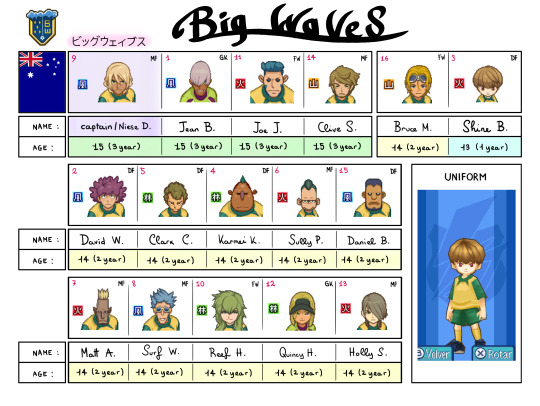
1) Jean Baker: "Australia's strongest goalkeeper. He is the true Poseidon."
2) David Waterman: "Originally an Aussie rules player but was longing to participate in the tournament."
3) Shine Beach: "He cannot stand it when a sandy beach is dirty and picks up garbage every day."
4) Karmei Kohler: "He keeps art handed down from ancient times in Australia as a tradition."
5) Clark Cain: "Eager to protect the rare creatures that live in Australia."
6) Sully Princeton: "A genius at finding the whereabouts of rare minerals. He seems to know by just looking at the terrain."
7) Matt Angle: "Patience strengthened by spiritual discipline is the key to this player's power."
8) Surf Wyndhas: "A worldwide master at surfing. He waits for good waves to always look at the sea."
9) Niese Dolphin: "The brilliant prince of the sea. He is the man to lead Australia."
10) Reef Hamilton: "He is a master at catching tropical fish in coral reefs by skindiving."
11) Joe Jones: "Attacks at once when it comes to opportunities to quietly creep up on the opponent."
12) Quincy Horst: "He travels the wilderness still looking for a new gold mine."
13) Holly Summers: "Although he has a part-time job as Santa every year he envies the cold areas."
14) Clive Scissors: "He is good at cutting through opponents with the use of his sharp arm."
15) Daniel Barrack: "He is working hard to be the best in the world of horse meat that has been kept at his home in Australia."
16) Bruce Marlin: "Does his footwork with a spring characteristic of a kangaroo."

1) Fermin Sanchez: "Like a bull at a matador, he charges straight through the crowd to grab the ball."
2) José Costa: "He's an experienced and tenacious mountain biker."
3) Rafael López: "He's a great flamenco dancer. Girls are lining up for a chance to dance with him."
4) Antonio Galius: "He's always making sketches for abstract paintings, like Picasso."
5) Querardo Naval: "He's trained to be a matador since he was a child, but he hates hurting animals."
6) Joan Nadal: "He eats five meals a day to keep his strength up when he's travelling overseas."
7) Igor Freire: "He's an avid consumer of paella, but he's really fussy about the type of rice."
8) Mikel Pereiro: "His hobby is making sailing boats. He's assembling an invincible armada in his bathtub."
9) Pedro Moreno: "He's raising a black Iberian pig at home, in the hope of producing tasty ham."
10) Samuel Mayo: "This plucky Pamplonica dreams of one day showing his mettle at the Running of the Bulls."
11) Davi Peroqui: "He's fiercely proud of Spanish football, and doesn't hide his desire to take on the world."
12) Juan Zubeldia: "Everyone is bewitched by his virtuosic skill at flamenco guitar."
13) Isaac César: "An opportunist on and off the field. If he sees a beautiful girl, he'll try to charm her."
14) Laudelino Sastre: "Like Don Quixote, he acts rashly without considering consequences."
15) Carlos Arroyo: "He hopes to raise architectural wonders like the Sagrada Familia."
16) Federico Rubiera: "He'd like to have a go at synchronised swimming, but he can't find a boys' team."
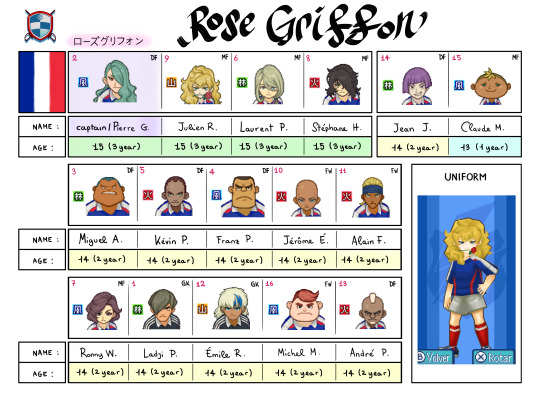
1) Ladji Paara: "Always draws pictures in Montmartre. He wants to be called the pioneer of soccer pictures."
2) Pierre Godin: "His motto is: always play with style and grace, no matter who your rival is."
3) Miguel Arron: "Despite his appearance, this boy has a gift for French cuisine."
4) Franz Poujol: "He wants to make a building more famous than the Eiffel Tower and the Arc de Triomphe in Paris someday!"
5) Kévin Pinot: "He wants to apply Napoleonic battle strategies on the playing field."
6) Laurent Pérec: "He always spends his days off relaxing at outdoor cafés."
7) Ronny Weiss: "As one of France's best boy models, he is in high demand for fashion shows and photogravures."
8) Stéphane Henno: "A young genius artist of chansons. All of his CDs are big hits!"
9) Julien Rousseau: "He likes to play with a rose clamped between his teeth. Very pretentious."
10) Jérôme Éloi: "Due to having a keen sense of smell, this person is capable of blending the best perfume."
11) Alain Failliot: "The son of a bicycle repairman. He'd like to help out at the Tour de France one day."
12) Émile Razzano: "He considers himself a devotee of French cinema and has a large collection of DVD movies."
13) André Panzo: "He likes nineteenth-century philosophy, but his friends do not understand him when he explains it."
14) Jean Jetin: "Although he has not yet made the leap to fame, this guy is a fashion prodigy."
15) Claude Moreau: "His baguettes are known throughout France. Mmm … They are delicious!"
16) Michel Morin: "He has a gift for gardening, especially if it's about cultivating life."
9 notes
·
View notes
Text

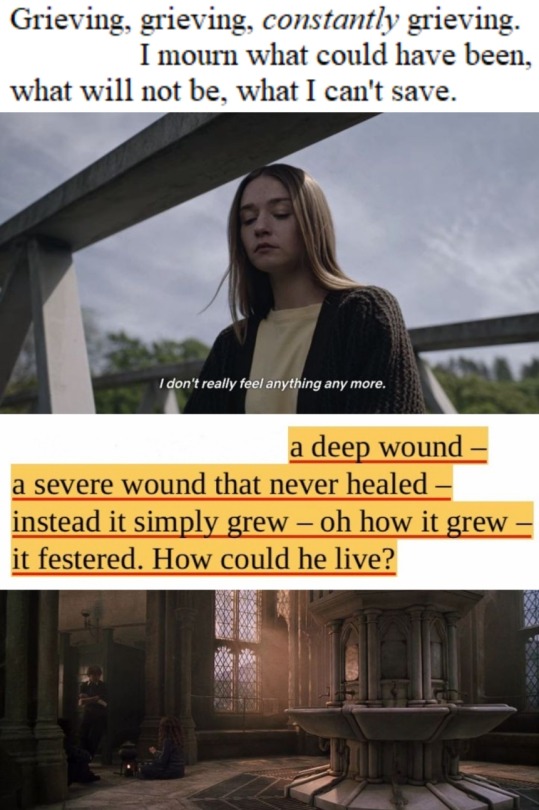

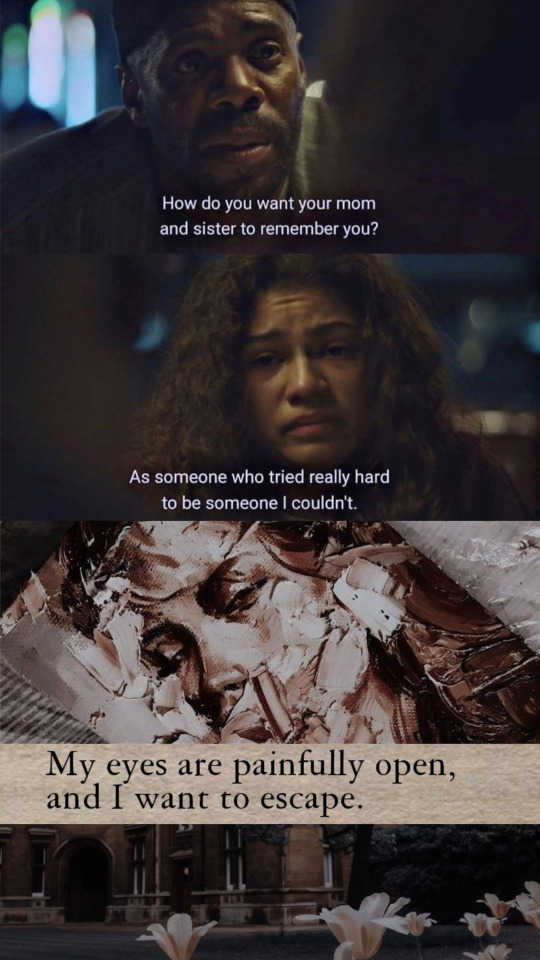

who am I anymore?
Virginia Woolf, from Night and Day / N.M. Sanchez, Initial Meeting / Anne Sexton / unknown / the end of the fucking world (tv series) / Frankenstein, Mary Shelley / franz kafka / Jorge Luis Borges / Euphoria (tv series) / Sylvia Plath / Kamala Das / Anne Sexton
#word weaving#dark acadamia aesthetic#virginia woolf#euphoria#sylvia plath#emily dickenson#anne sexton#taylor swift#the end of the fucking world#franz kafka#sad literature quotes#existential crisis#depression
168 notes
·
View notes
Text
I don’t normally make text posts here but @narwhaled-wheatfield tagged me so here we are
rules: shuffle your likes or your favorite playlist and post the first ten tracks (and say a little something about them if you want)
So here’s that with my spotify likes:
1. Fade to Black - Metallica
- Metallica has always been one of my favorite artists, ever since I was 13 or so. Their first five albums are classics and also excellent reminders of what metal music can be. Many artists seem to think that metal is about playing the fastest or having a louder amp than your competition. But songs like Fade to Black show that the most important ingredient in metal music is, just like in any other genre, the songwriting. Metal songs can be just as complex and compelling as songs of any other genre, and Metallica helped show that.
2. Waltz Across Texas - Ernest Tubb
- A playlist isn’t complete without the tubbster
3. Harpsichord Concerto No. 1 in D Minor - Johann Sebastian Bach, performed by Jean Rondeau
- Jean Rondeau is probably the most interesting modern harpsichordist. He, along with Jakub Jozef Orlinski, helped introduce me properly to baroque music.
4. Motor Spirit - King Gizzard and the Lizard Wizard
- I know the name is silly, but KGLW has put out the two best metal albums of the last 10 years. They also respect the principle I mentioned above. KGLW’s metal work isn’t the fastest, or the heaviest, but it is crafted with far more care and attention to detail than most modern metal music.
5. Schwanengesang: XII. Ihr Bild - Franz Schubert, performed by Kathleen Sanchez and Johnandrew Slominski
- I’ve never been a huge Schubert fan, but his vocal collections have always been a favorite of mine. And Kathleen Sanchez performs these songs perfectly.
6. Yekteniya V: Svyatyy Vkhod - Batushka
- Haven’t you seen my blog? Of course I listen to black metal.
7. 16 Waltzes: No. 4 in E Minor - Johannes Brahms, performed by Idil Biret
- Brahms’s 16 Waltzes is simply a classic. Nothing else to say.
8. Perihelion - King Gizzard and the Lizard Wizard
- See 4
9. Ready for Tomorrow - Babe Rainbow
- In another life I lived in a van on the upper west coast and chased those tasty waves brah
10. Sweet Tasting Tennessee - Daniel Donato
- I don’t remember adding this song but it’s here and it’s good so it’s staying.
It’s missing a few of my staple genres but oh well. No ethiopian jazz, sorry nar.
I tag no one.
4 notes
·
View notes
Text
~10 Fandoms/ ~10 Characters/ ~10 Tags
Tagged by: @kylo-wrecked
Tagging: anyone who wants to do it, no pressure. Beware below the cut, there's a ton of names and not a ton of exposition because that's 100 characters in total and I can't talk about how much I love them all individually or I would be here for the rest of my week. :P
Marvel Comics
Beast (so unexpected!).
Emma Frost.
Spider-Man.
The Wasp.
Daredevil.
Bishop.
The Thing.
Mr. Sinister.
She-Hulk.
Sabretooth.
Star Trek
Worf.
Christopher Pike.
Christine Chapel.
Charles 'Trip' Tucker.
Carol Marcus (TWOK).
Hugh Culber.
T'Ana.
T'Pol.
Nyota Uhura.
Nog.
James Bond
Tracy Bond.
Natalya Simonova.
Felix Leiter (Jeffrey Wright).
Valentin Zukovsky.
Melina Havelock.
Franz Sanchez.
Alec Trevelyan.
M (Judi Dench).
Elektra King.
Vesper Lynd.
Resident Evil
Jill Valentine.
Carlos Oliveira (remake).
Moira Burton.
Leon S. Kennedy (original and remake).
Marvin Branagh (remake).
Claire Redfield.
Sherry Birkin.
Sheva Alomar.
Albert Wesker.
Alex Wesker.
Persona
Makoto Nijima.
Ryuji Sakamoto.
Yukiko Amagi.
Toranosuke Yoshida.
Margaret.
Nanako Dojima.
Akihiko Sanada.
Haru Okumura.
Kanji Tatsumi.
Sojiro Sakura.
Supermassive Games
Sam (Until Dawn).
Jacob (The Quarry).
Dylan (The Quarry).
Mike (Until Dawn).
Salim (House of Ashes).
Fliss (Man of Medan).
Josh (Until Dawn).
Ryan (The Quarry).
Chris (Until Dawn).
Jason (House of Ashes).
Star Wars
Leia Organa.
Obi-Wan Kenobi.
Zeb Orrelios.
Chopper.
Padme Amidala.
Lando Calrissian.
Count Dooku.
Qui-Gon Jinn.
Finn.
Poe Dameron.
Doctor Who
Donna Noble.
Ninth Doctor.
Bill Potts.
Third Doctor.
Seventh Doctor.
Ace.
Ianto Jones.
Martha Jones.
Pete Tyler.
Adelaide Brooke.
Kaiju Movies (it counts!)
Gamera (90s trilogy).
Shin Godzilla.
Tamura (Godzilla vs. Mechagodzilla).
Anguirus.
Mothra (KOTM).
Iris (Gamera 90s trilogy).
Legion (Gamera 90s trilogy).
Tsutomu Osako (Gamera 90s trilogy).
Hedorah.
King Ghidorah.
DC
Poison Ivy.
Tawky Tawny.
Jim Gordon.
Catman.
Bane.
Alfred Pennyworth.
Bloodsport (James Gunn).
Black Mask (Emancipation of Harley Quinn).
Silk Spectre II.
Lobo.
I have types, as you can probably tell, and it's probably just as obvious which fandoms I'm super into and which ones I enjoy more casually.
6 notes
·
View notes
Note
Favorite Villain defeats?
Okay, this is gonna be quite a long list…
Thanos and his forces getting snapped out of existence by an Infinity Gem-wielding Tony Stark in Avengers Endgame; karmic considering that's exactly what Thanos did to half the universe's population in the original timeline
Two from Dragon Ball Z: first was Freeza’s invasion of earth ending with him getting chopped to bits and blasted away by Future Trunks, second was Cell being vaporized after his prolonged Kamehameha duel with Gohan. Granted, there were a lot of great villain defeats in that anime, but those two are the most noteworthy due to these two all-powerful, sadistic mass murderers being annihilated by foes they arrogantly underestimated
Theo Galavan suffering brutal revenge at the hands of James Gordon and The Penguin in Gotham. Up to that point, Theo had been a smug, high-and-mighty manipulator who got away with any number of horrible things with the public lauding him as a hero, so seeing him reduced to fruitlessly begging for mercy while the two men whose lives he ruined the most put aside their differences to put him down for good was immensely satisfying
From The Princess Bride — Inigo Montoya bouncing back from certain defeat during his sword fight with Count Rugen, overpowering the man who tormented him throughout his life before slashing him through his black heart with one last sword stroke preceded with ten words: "I want my father back, YOU SON OF A BITCH!"
Dr. Facilier being dragged into the underworld by his "Friends on the Other Side" in The Princess and the Frog. Suffice it to say, he wasn't ready.
Adolf Hitler getting blown up by American suicide bombers while the rest of the Nazi high command are trapped in a burning movie theater in Inglorious Basterds
The abusive orphanage guy getting run over by Dopinder in Deadpool 2
Miles Bron's mansion getting burned down with the Mona Lisa in it in Glass Onion
Many examples from Saints Row:
The Boss beating Maero's monster truck ambush before capping Maero personally when the latter is pinned beneath the flaming wreckage of his rig
The Boss and Johnny Gat burying Shogo Akuji alive after Shogo had Gat's wife killed and crashed her funeral
The Boss seemingly losing to Shogo's yakuza father Kazuo in a sword fight before "cheating" by shooting him, running him through with his own sword, and leaving him pinned to the deck of an exploding boat
The Boss shooting corrupt CEO Dane Vogel out the window of the top floor of his skyscraper
The Boss donning power armor to challenge the alien overlord Zinyak to a one-on-one fight, concluding with The Boss dethroning the all-powerful extraterrestrial invader by ripping his head off
A lot of examples from James Bond:
Bond tricking Auric Goldfinger into shooting out an airplane window, causing him to get sucked out to his doom in Goldfinger ("Where's Goldfinger?" "Playing his golden harp")
Bond making Dr. Kananga inflate like a balloon until he exploded in Live and Let Die ("He always did have an inflated opinion of himself")
Bond using Scaramanga's own tricks against him during their pistol duel in the funhouse in The Man with the Golden Gun
Bond shooting Karl Stromberg twice below the belt in The Spy Who Loved Me
Bond shunting Hugo Drax out an airlock and launching him into space in Moonraker ("Where's Drax?" "Oh, he had to fly")
Max Zorin plummeting to his doom from atop the Golden Gate Bridge, laughing all the while, in A View to a Kill
Bond setting drug lord Franz Sanchez on fire with the lighter Felix gave him in License to Kill
Bond dropping his evil former partner Alec Trevelyn to the bottom of a ravine where he's left barely clinging to life before the entire satellite building collapses on top of him in GoldenEye ("For England, James?" "No, for me!")
Bond turning Elliot Carver's drill machine against him in Tomorrow Never Dies ("YOU FORGOT THE FIRST RULE OF MASS MEDIA, ELLIOT! GIVE THE PEOPLE WHAT THEY WANT!")
Bond ending Silva's rampage with a stab to the back in SkyFall ("Last rat standing")
So many examples from JoJo's Bizarre Adventure:
Kars getting launched into space after becoming immortal
Polnareff avenging his sister's death by turning her killer, J. Geil, into a human pincushion
The brutal beatdown Jotaro gave smug bully Steely Dan after putting up with his tricks for too long
Jotaro beating Daniel D'arby in poker by bluffing so brazenly that Dan had a mental breakdown
The shorter but still impactful beatdown Jotaro gave Terence D'arby after the latter cheated in a game to take their souls
Jotaro finally putting a stop to DIO's reign of terror by exploding his head after a massive battle across Egypt
Josuke forcibly fusing serial killer Angelo Katagiri into a rock for all eternity
Rohan tricking the obnoxious Cheap Trick into looking back at the Haunted Alley, causing the ghosts to drag him into oblivion (with Rohan even writing "I will go to Hell" on Cheap Trick just to make sure he wouldn't escape punishment)
Yoshikage Kira getting run over by an ambulance before his soul is ripped to pieces by the vengeful spirits of his many victims
Giorno giving the mass-murdering Cioccolata the longest and most brutal beating in the history of the show
Unhinged mafia don Diavolo being cursed to die over and over again in increasingly horrific ways for all eternity
There are many more, but these are all the ones I could think of at the moment
7 notes
·
View notes
Note
hi <3
I love your headcanons SO MUCH AHHHH. I was wondering if you could do more hcs with Dario from James Bond (my beloved.) like dario with a gf thats as crazy as him. tysmmm <333
Dario W/ Sadistic S/O Headcanons

Summary: As requested, some Dario X SadisticFem!Reader action :D
A/N: These are more on the shorter side, but I hope you still enjoy.
Pairing(s): Dario X Fem!Reader
Characters: Dario, Reader, Franz Sanchez
Link: James Bond Franchise
⚠️ Warnings!: Mild violence, mild sexual content mentioned, masochism, toxic relationships
______________________________________________________________
✨Dario with someone who has just as much is a mean masochistic streak as him, is a match made in heaven... or maybe hell is more apt. You guys are like two yandere's in love.
✨Knowing he has someone who will kill with him or for him is a massive turn on. Especially if you will torture anyone who messes with him.
✨He finds it really hot that you will partake in torture sessions with him. Interrogations can sometimes even take an almost foreplay-like interaction between the two of you
✨Dario loves that you get just as jealous as he does when someone else tries to flirt with you or steal you from him. You will make sure they suffer for even looking in Dario's direction.
✨When you two are together, you also get the job done. Sanchez loves that instead of you two distracting each other from doing jobs, you work even more effectively.
✨Things definitely get a lot more spicy between the two of you in your intimate life (wink-wonk). Dario doesn't feel like he needs to hold back as much as he does with someone who doesn't share his affinity for pain.
✨He likes when you two fight for dominance in the relationship, both of you love control. He will occasionally let you lead, but will mostly just fight you about it.
#dario x reader#dario#dario license to kill#license to kill dario#license to kill#james bond#james bond fanfiction#james bond dario#dario james bond#fem reader#trash gobby requests
11 notes
·
View notes
Text
HANNAH’S “WHO’S HOTTEST?” MALE BOND VILLAINS
ROUND 1/5- POLL 16/32



Welcome to my extremely large male Bond villains bracket! I originally intended to use 32 villains/ henchmen, but felt bad that it involved excluding some obscure personal favorites so decided to go insane and spring for 64! There are so many goddamn men who wish James Bond ill will lol.
The match ups on the first round were paired using a random number generator, the following rounds will obviously be paired based on who wins.
One day for each poll only. And you can find all the other polls in my “hannah is talking” and “hannah’s bond bracket” tags
Don’t worry if you don’t know some of the dudes here, I dug up some of the most ass random henchmen to create this, so just follow your heart on who you believe is most attractive.
And Have Fun!
#hannah is talking#hannah’s bond bracket#now these two men may look equally mid but please consdier. Franz Sanchez has an iguana with a diamond collar#also he subjects Dalton Bond to the pajama treatment which is pretty hot of him if I do say myself#changing a hero’s clothes while theyre unconcious and tucking them into bed …#james bond#007#polls#smash or pass#who’s hotter?
1 note
·
View note
Text
Queering the Bond characters, part 2: the classic people

After the Bonds, now on to a bunch of people from the classic Bond flicks...
-/-
Dr. Julius No: aromantic asexual
People are temporary, science is eternal.
Rosa Klebb: homoromantic homosexual
As per canon.
Ernst Stavro Blofeld (all versions except Diamonds are Forever): aromantic asexual
Evil so pure it has no need for earthly pleasures. Is it to preserve this that they made him Bond’s brother in the Craig era? Like, for fear Bond would actually want to bed him?
Ali Kerim Bey: biromantic bisexual
This man LOVES beautiful people. All of them.
Pussy Galore: homoromantic homosexual
Or at least, that’s what she, the original lesbian extraordinaire, should have been. But because Bond can somehow still win her over, let’s give her a 5 on the Kinsey scale, shall we? And let's not talk about her treatment in GoldenEye Rogue Agent... as much as I love this game, there are things I can't accept.
Diamonds are Forever!Blofeld: homoromantic homosexual
I guess? I mean he’s the Blofeld who dressed in drag, plus there’s this weird tension between him and Bond and his total disinterest in Tiffany.
Albert Wint & Charles Kidd: homoromantic homosexual
Like with Klebb, a good reminder that they canonly are. Sweet creepy couple.
Francisco Scaramanga: homoromantic pansexual
Canon says he’s a closeted gay, but I think that the movie version (at least) is more or less self-aware and still is attracted to women. Pan because he seems more attracted to the idea of Bond being an equal than a (hot) man.
May Day: biromantic bisexual
She loves Zorin, she loves her girlfriends, she doesn’t mind playing with Bond, she always kicks ass. Simple as that.
Franz Sanchez: biromantic heterosexual
I mean, this man just pampers Bond, perhaps even more than Lupe. He’d probably cuddle with him and/or Dario if he could. I don’t exclude a 1 or 2 on the Kinsey scale because of this, by the way.
30 notes
·
View notes